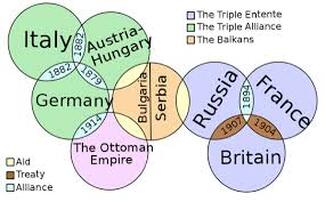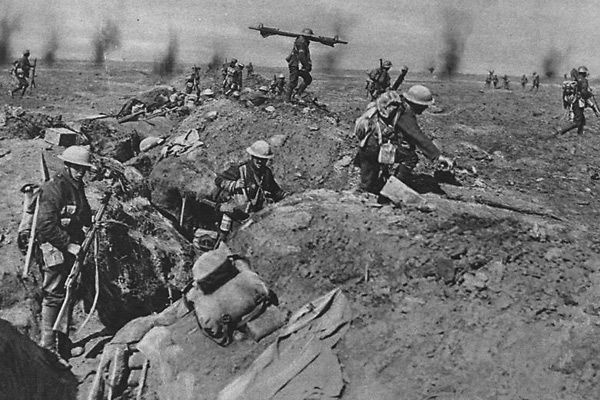C - LevelGerman. Gas Hood. 1915.
I chose this because gas played an important role in this war. |
B - LevelWorld War I Alliances. The reason this was a world war is because there were so many different alliances that forced certain countries to defend others even if they did not really want to. In my reading I learned that the Triple Entente was actually a "series of interlocking agreements." s
|
A - LevelBattle of Somme. The reason I chose this is because this image shows the trenches and the overall conditions of the land that was repeatedly bombed and fought over. I believe this tells the story of WWI because 1,120,000 people died during this battle and all that was gained was 30 miles.
This quote signifies the horror that was the Battle of Somme. “The next morning (July 2nd) we gunners surveyed the dreadful scene in front of us……it became clear that the Germans always had a commanding view of No Man’s Land. (The British) attack had been brutally repulsed. Hundreds of dead were strung out like wreckage washed up to a high water-mark. Quite as many died on the enemy wire as on the ground, like fish caught in the net. They hung there in grotesque postures. Some looked as if they were praying; they had died on their knees and the wire had prevented their fall. Machine gun fire had done its terrible work.” --George Coppard, machine gunner at the Battle of the Somme. |


